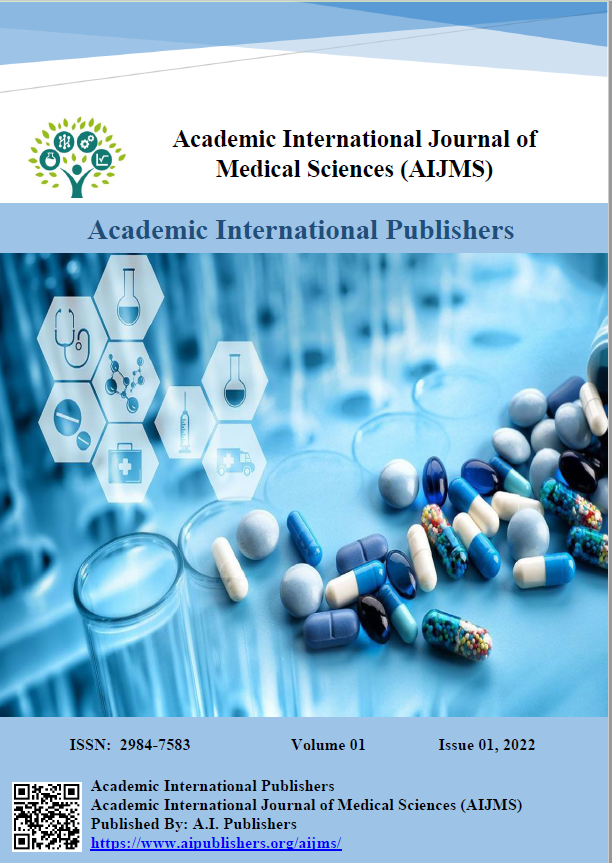Synthesis and Characterisation of New Sulfonamide Derivatives and Their Antibacterial Activity
DOI:
https://doi.org/10.59675/M326Keywords:
Sulfonamides, anti-bacterial activity, synthesis, characterization, minimum inhibitory concentration.Abstract
Sulfonamides, a category of antimicrobial medications, are the subject of ongoing research due to new forms of bacterial resistance. The present study was scheduled to synthesise and identify new sulfonamide derivatives and to evaluate their antibacterial effects against Gram-positive and Gram-negative bacterial strains. The sulfonyl chlorides were also combined with various amines and coupled under basic conditions to give the new sulfonamides with good to excellent yields (62-92%). The structural characterisation employed FT-IR spectroscopy, 1H and 13C NMR, and mass spectrometry. The antibacterial activity of the synthesised compounds against Staphylococcus aureus, Escherichia coli, Klebsiella pneumoniae, and Pseudomonas aeruginosa was determined using agar diffusion and broth microdilution. The results revealed that the existing products of the sulfonamide analogues possessed an enormous degree of broad-spectrum antibacterial action with MICs of 1.56 256 μg/mL. Several compounds were active, especially against Gram-negative pathogens, and some of the analogues were as active as ciprofloxacin. These findings suggest that the produced sulfonamides can serve as viable lead structures for the development of antibacterial drugs.
References
Saber A, Moussa K, Labib G, Mohamed S, Gannal SS. Synthesis, molecular modelling, and antibacterial evaluation of new sulfonamide-dyes based pyrrole compounds. Sci Rep. 2024; 14:60908.
Qadir MA, Ahmad I, Waheed A, et al. Synthesis, Characterization, and Antibacterial Activities of Novel Sulfonamides. Biomed Res Int. 2015; 2015:938486.
Saifi Z, Ali A, Inam A, et al. Synthesis and antibacterial evaluation of quinoline–sulfonamide hybrid compounds. RSC Adv. 2025; 15:1680–1689.
Khalifa A, Anwar MM, Alshareef WA, et al. Design, Synthesis, and Antimicrobial Evaluation of New Thiopyrimidine–Benzenesulfonamide Compounds. Molecules. 2024;29(19):4778.
Almalki AJ, Ibrahim TS, Taher ES, et al. Synthesis, Antimicrobial, Anti-Virulence and Anticancer Evaluation of New 5(4H)-Oxazolone-Based Sulfonamides. Molecules. 2022;27(3):671.
Özbek N, Katırcıoğlu H, Karacan N, Baykal T. Synthesis, characterization and antimicrobial activity of new aliphatic sulfonamide derivatives. Bioorg Med Chem. 2007;15(15):5105–9.
Singh K, Singh VK, Mishra R, et al. Design, synthesis, DFT, docking studies, and antimicrobial evaluation of novel benzimidazole-containing sulphonamide derivatives. Bioorg Chem. 2024; 149:107473.
Wang X, Li S, Liu D, Li H, Song R, Hu D. Novel aurone-derived piperazine sulfonamides: Development and mechanisms of action as immunostimulants against plant bacterial diseases. Pesticide Biochemistry and Physiology. 2024 Jun 1; 202:105955.
Supuran CT. sulfonamides. Molecules. 2017 Sep 29;22(10):1642.
Hardman JG, Limbird LE. Goodman and Gilman's The Pharmacological Basis of Therapeutics. 11th ed. McGraw-Hill; 2006.
Sköld O. Sulfonamide resistance: mechanisms and trends. Drug resistance updates. 2000 Jun 1;3(3):155-60.
Yousef F, Mansour O, Herbali J. Sulfonamides: historical discovery development (structure-activity relationship notes). In-vitro In-vivo In-silico Journal. 2018 May 6;1(1):1-5.
Rehman H, Qadir A, Ali Z, Nazir S, Zahra A, Shahzady TG. Synthesis and characterization of novel sulfonamides derivatives and their antimicrobial, antioxidant and cytotoxicity evaluation. Bulletin of the Chemical Society of Ethiopia. 2017;31(3):491-8.
Rehman H, Qadir A, Ali Z, Nazir S, Zahra A, Shahzady TG. Synthesis and characterization of novel sulfonamides derivatives and their antimicrobial, antioxidant and cytotoxicity evaluation. Bulletin of the Chemical Society of Ethiopia. 2017;31(3):491-8.
Hansch C, Deutsch EW, Smith RN. The use of substituent constants in drug design. J Am Chem Soc. 1965;87(12):2738–2742.
Topliss JG. Utilization of operational schemes for analog synthesis in drug design. J Med Chem. 1972;15(10):1006–1011.
Silver LL. Multi-targeting by monotherapeutic antibacterials. Nat Rev Drug Discov. 2007;6(1):41–55.
Martin YC, Kofron JL, Traphagen LM. Do structurally similar molecules have similar biological activity? J Med Chem. 2002;45(19):4350–4358.
Kitchen DB, Decornez H, Furr JR, Bajorath J. Docking and scoring in virtual screening for drug discovery. Nat Rev Drug Discov. 2004;3(11):935–949.
Blair JMA, Webber MA, Baylay AJ, et al. Molecular mechanisms of antibiotic resistance. Nat Rev Microbiol. 2015;13(1):42–51.
Zhang MQ, Wilkinson B. Drug discovery beyond the 'rule-of-five'. Curr Opin Biotechnol. 2007;18(6):478–488.
Caldwell GW, Yan Z. Screening for reactive intermediates and toxicity assessment in drug discovery. Curr Opin Drug Discov Devel. 2006;9(1):47–60.
Downloads
Published
Issue
Section
License
Copyright (c) 2025 Academic International Journal of Medical Sciences

This work is licensed under a Creative Commons Attribution 4.0 International License.





